NIZLA Resene Pride of Place Awards gallery
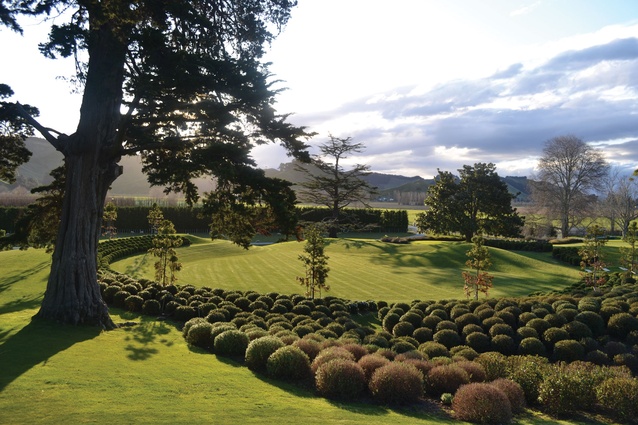
The Earthworks Garden, just one aspect of the multifaceted NZILA George Malcolm Supreme Award-winning Nick’s Head Station Stewardship Masterplan by Nelson Byrd Woltz. Image: Nelson Byrd Woltz Landscape Architects
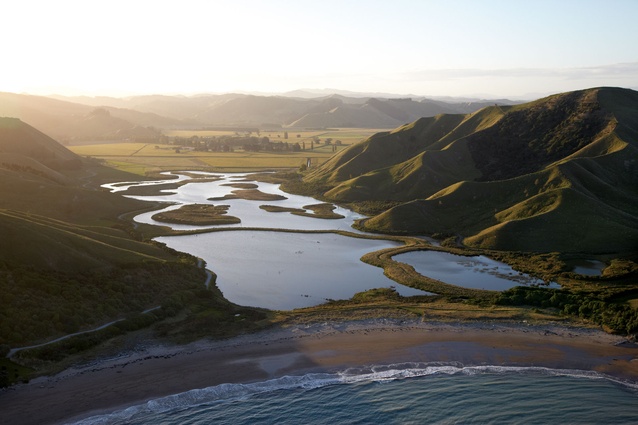
The Orongo Wetlands, another part of the NZILA George Malcolm Supreme Award-winning Nick’s Head Station Stewardship Masterplan. Image: Nelson Byrd Woltz Landscape Architects
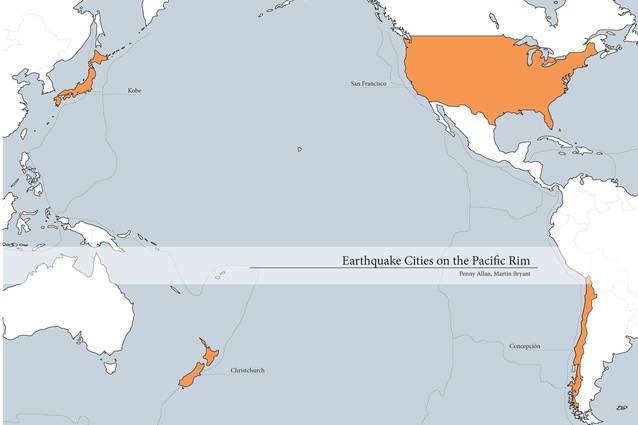
The NZILA Charlie Challenger Supreme Award for landscape planning was won by Penny Allen and Martin Bryant for topical research on Earthquake Cities on the Pacific Rim. Image: Penny Allen and Martin Bryant
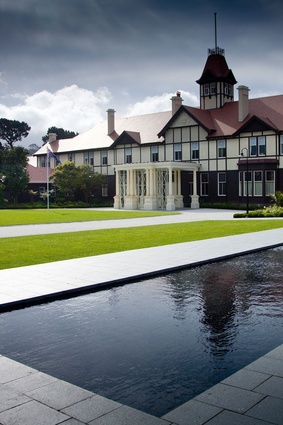
The Government House Conservation Project undertaken by Isthmus with Athfield Architects, was awarded an NZILA Award of Excellence for residential landscape architecture. Image: Simon Devitt

Planting detail from the Government House Conservation Project undertaken by Isthmus with Athfield Architects. The project received an NZILA Award of Excellence. Image: Simon Devitt

Government House again. The judges said, “A stunning upgrade and addition that showcases the outstanding quality and beauty of both New Zealand plants and design.” Image: Simon Devitt
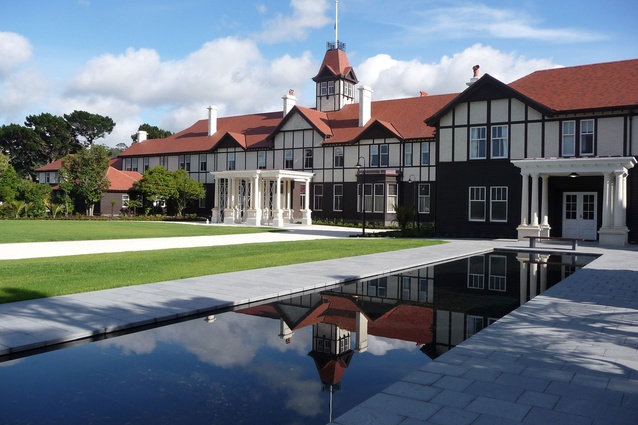
Government House’s reflection pool has exemplary detailing, said the judges. Image: Simon Devitt

‘Waiwhero’ by Wraight + Associates, awarded an NZILA Award of Distinction for residential landscape architecture. Image: Wraight + Associates

Said the NZILA judges: “The charm of this rural garden is its simplicity and the strength of the relationship between house and broader landscape.”
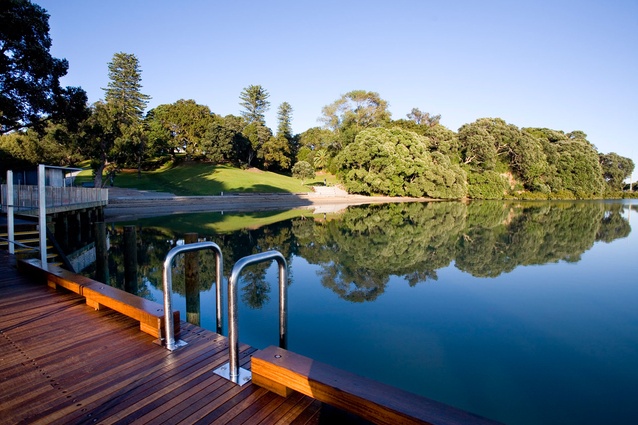
“A stunning example of coastal restoration that provides for extensive public re-engagment with the water,” said the judges of Taurarua Judges Bay. Image: Allen Nicholson
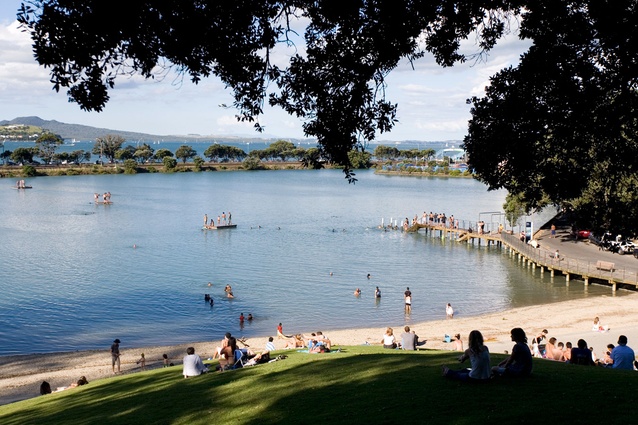
Taurarua Judges Bay in Parnell, by Reset Urban, was awarded an NZILA Award of Distinction for rural/park landscape architecture. Image: Allen Nicholson
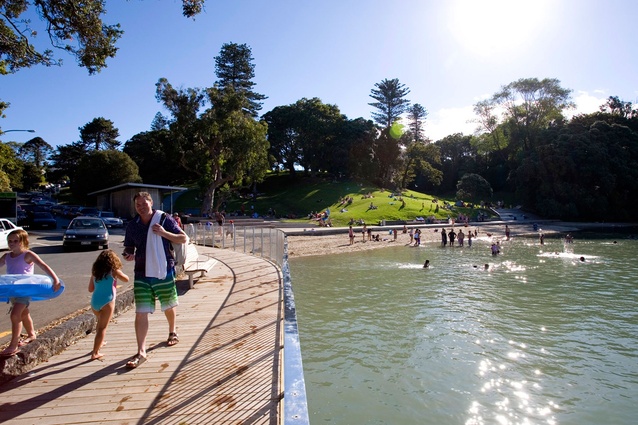
The judges said the extension of the landscape from the shoreline out into the water is “outstanding”, and has allowed for “the entire transformation of a once degraded area”. Image: Allen Nicholson
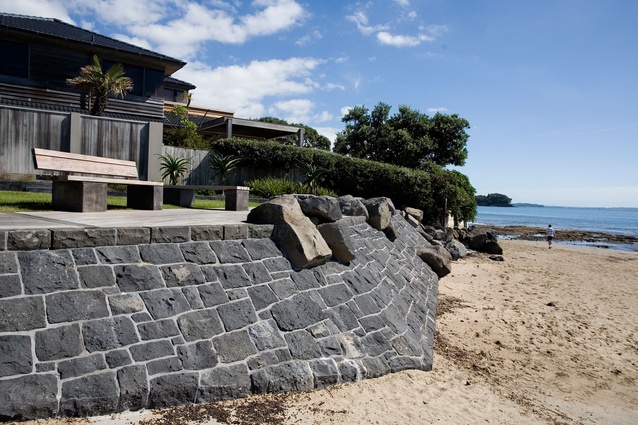
Another Reset Urban project, a pocket park on Ocean View Road, was also awarded an NZILA Award of Distinction for rural/park landscape architecture. Image: Allen Nicholson
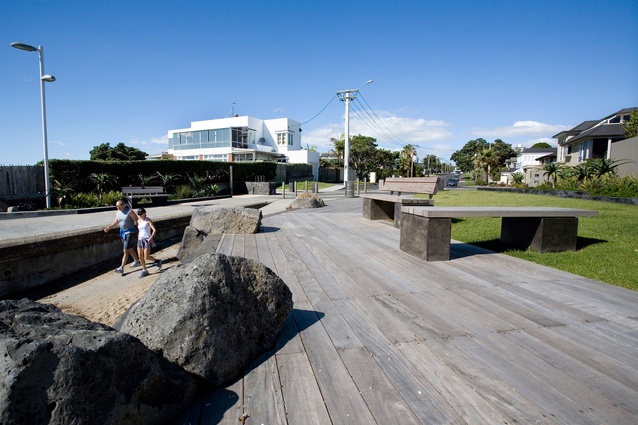
The project, “illustrates the power of landscape and was a judges’ favourite. The simplicity, clarity and exemplary detailing of this small coastal pocket park is outstanding.” Image: Allen Nicholson

Detail from the new pocket park at Milford Beach. This park is part of a long-term strategy to enhance the Takapuna to Milford Coastal Walkway. Image: Allen Nicholson

Cliff Face Park by Natural Habitats in collaboration with Auckland Council and Surface Design received an NZILA Award of Distinction for rural/park landscape architecture. Image: Supplied
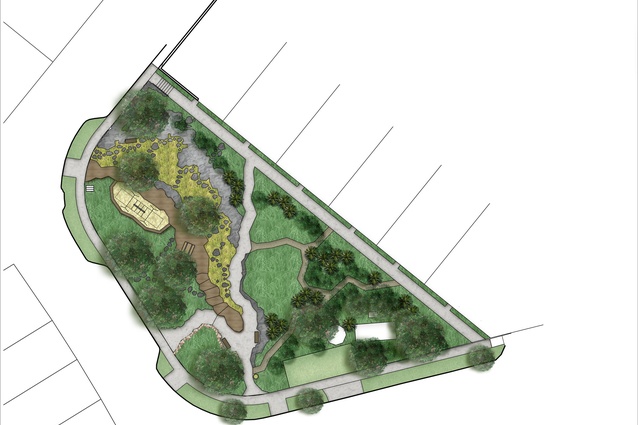
A plan of Cliff Face Park. Judges said: “This project illustrates how effective planting design can be in public open space areas. The use of native plants is exemplary.” Image: Supplied
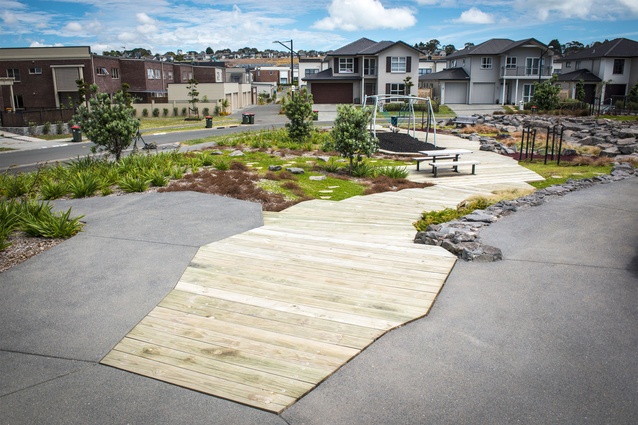
“This is high quality transition of concept through to detail that results in a cheerful and interesting public park with a strong sense of place,” said the NZILA judges. Image: Supplied
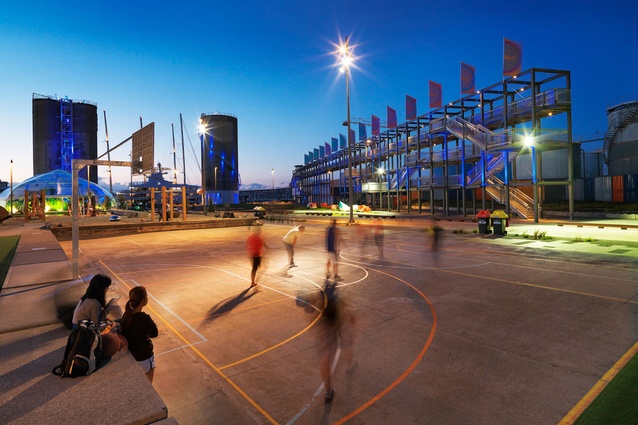
Wynyard playspace by Isthmus received an NZILA Award of Distinction for rural/park landscape architecture. Image: Jeff Brass
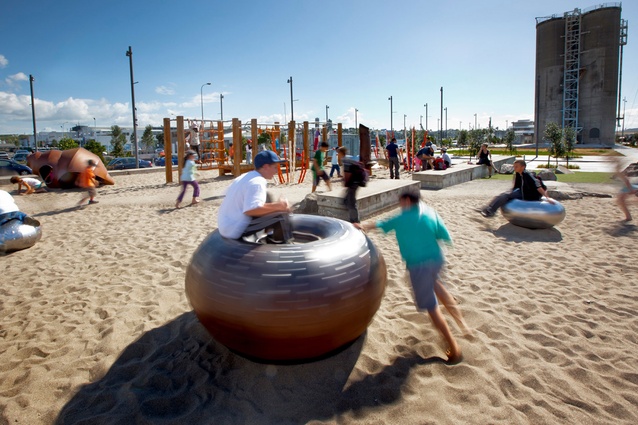
Judges said: “The temporary nature of the project has not limited the designers creativity and the resulting outcome has a strong sense of place.” Image: Jeff Brass
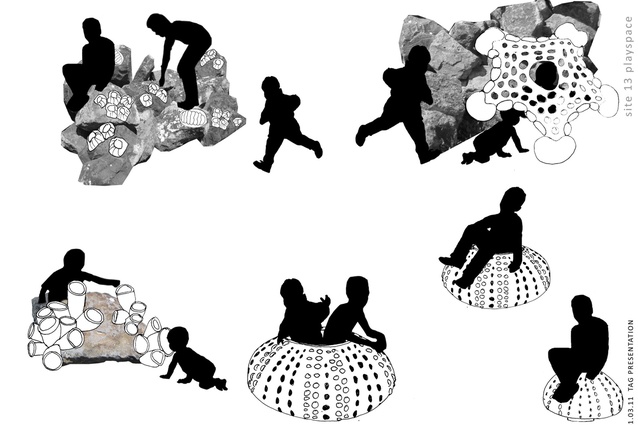
Concept drawings by Isthmus for the Wynyard playspace. Image: Isthmus
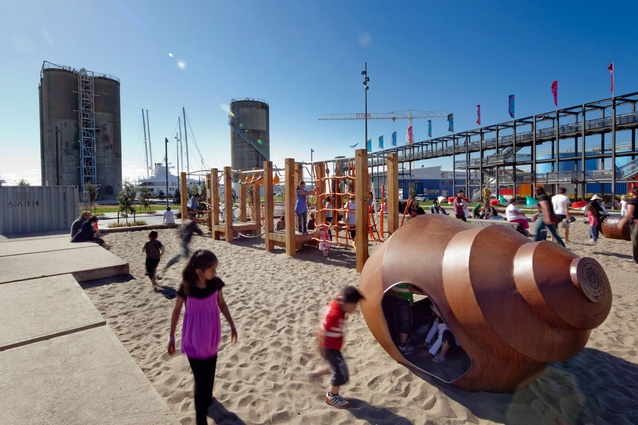
“The design provides for seamless integration of all ages and opportunities for caregiver participation,” said the judges. Image: Jeff Brass
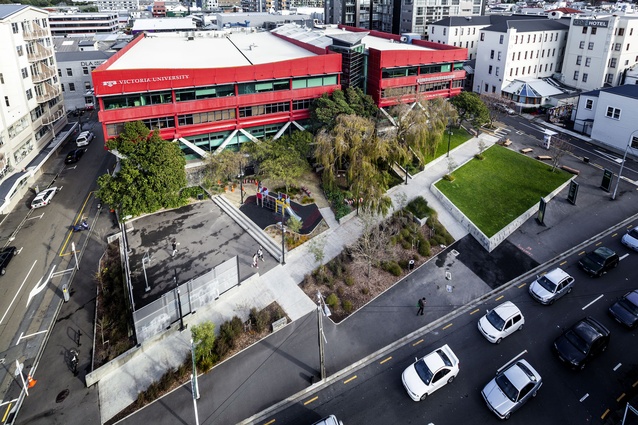
Cobblestone Park, Wellington, by Wraight + Associates, received an NZILA Award of Distinction. Image: Jeff Brass
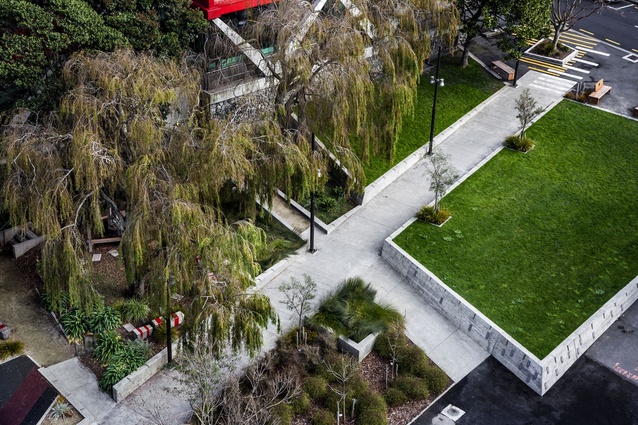
Judges said Cobblestone Park was a “relief from the intensity of Cuba St”. The planting was “interesting, tactile and appropriate to achievement of privacy, shelter and drama.” Image: Jeff Brass
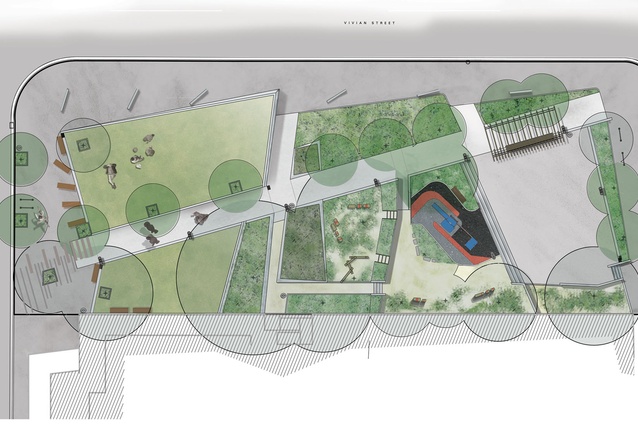
Cobblestone Park plan. Image: Wraight + Associates
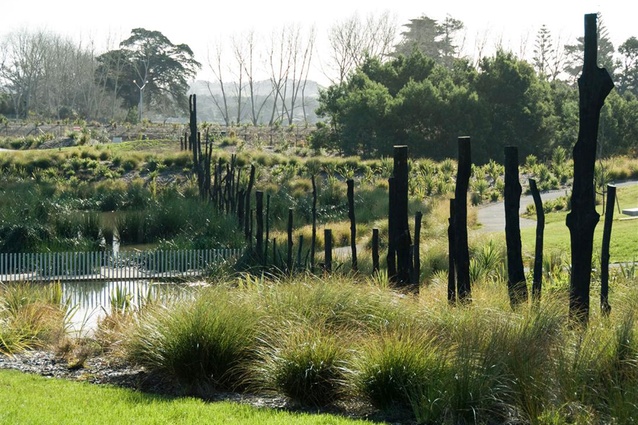
Hobsonville Point Park, by Isthmus, received an NZILA Award of Distinction. Image: Isthmus
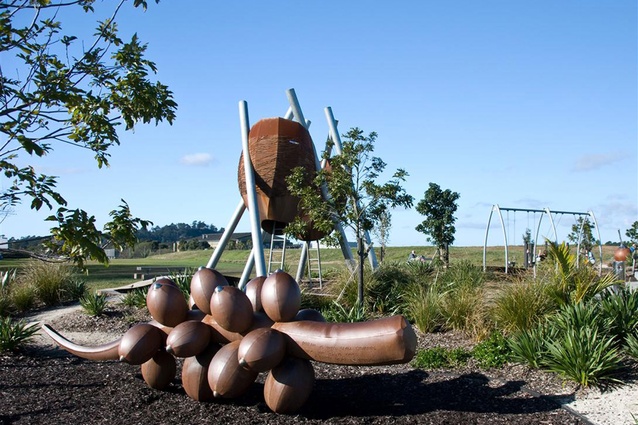
The judges said the park is, “A complex and extensive play space that successfully explores the relationship between play and native streamside planting.” Image: Isthmus
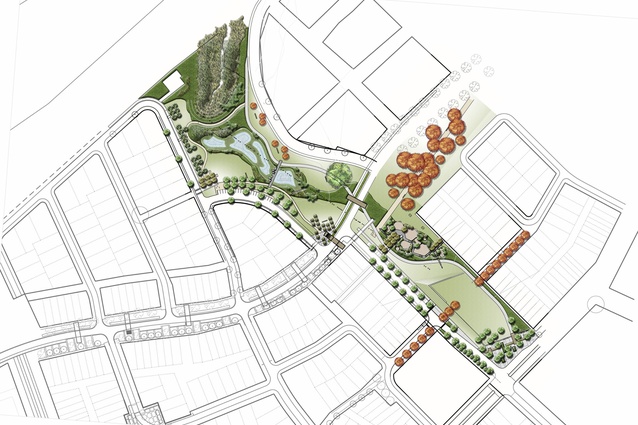
Hobsonville playspace plan. Image: Isthmus
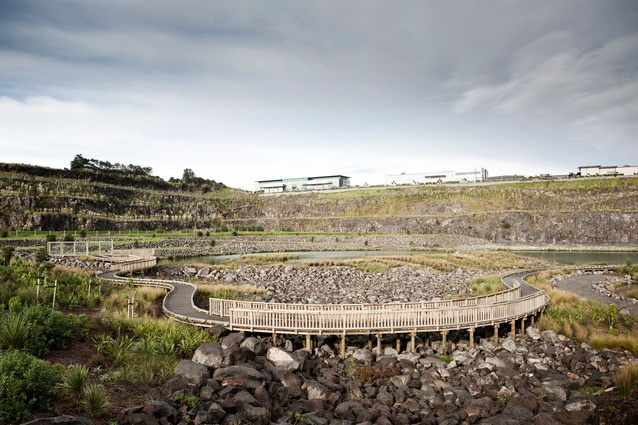
Maungarei Springs, by Natural Habitats in collaboration with Auckland Council and Surface Design, was awarded an NZILA Award of Distinction. Image: Supplied
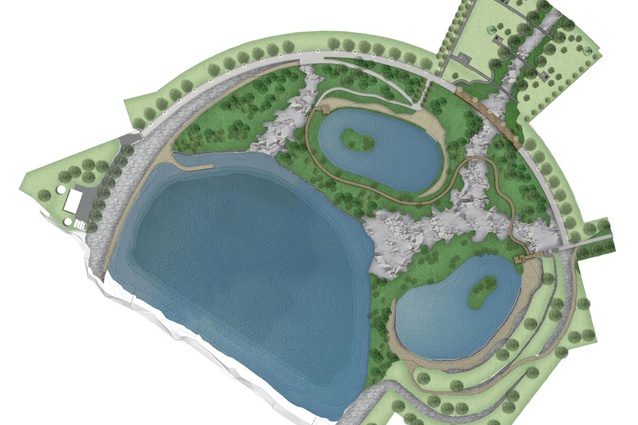
Maungarei Springs plan. The design “has fun with the link to broader quarry landscape”, said the judges. Image: Natural Habitats
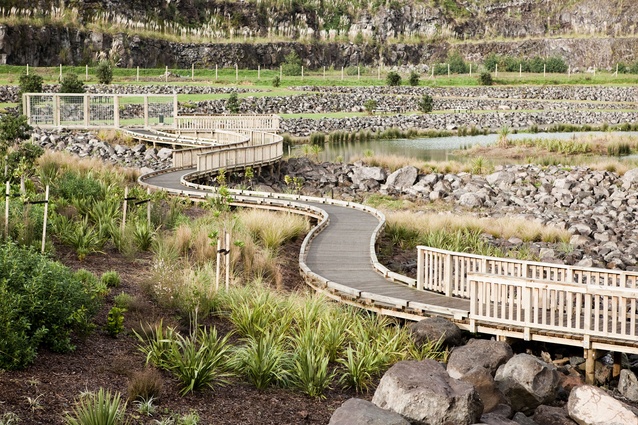
The space is a stormwater detention and treatment area, but the designsuccessfully provides variable spaces that are interesting to explore and appropriate to user’s needs. Image: Supplied

Oruaiti Reserve Pa site, Wellington, received an NZILA Award of Distinction. Image: Supplied
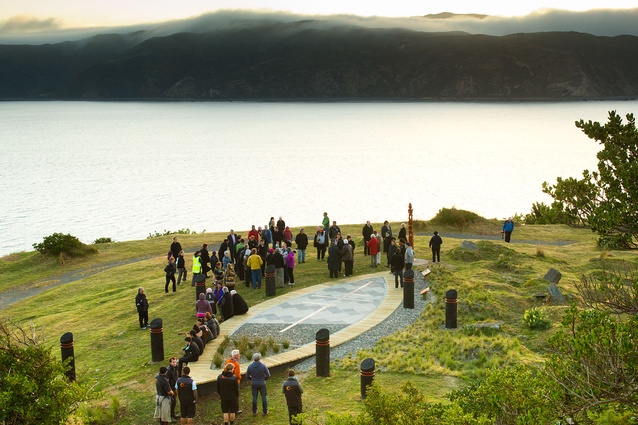
The judges said the WCC Architects’ design was an “excellent, evocative and low key response to conveying the cultural stories of the site while also providing a point of interest.” Image: Supplied
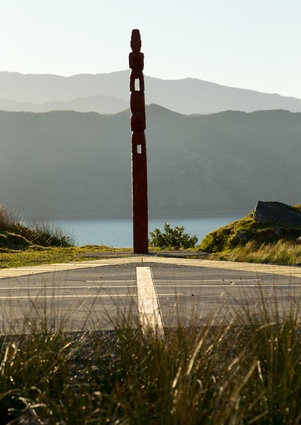
“The design is restrained so that it doesn’t dominate the headland and provides a contemplative destination for those using the walkway,” said the NZILA’s judges. Image: Supplied
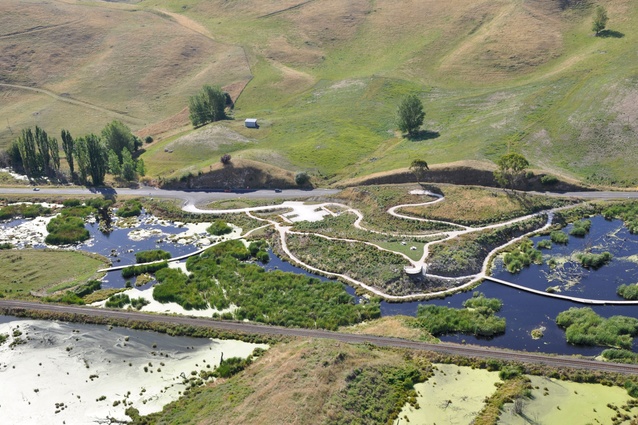
Pekapeka Wetlands by Shannon Bray Landscape Architect and Hawke’s Bay Regional Council, winner of an Award of Distinction in the rural/park category. Image: Supplied
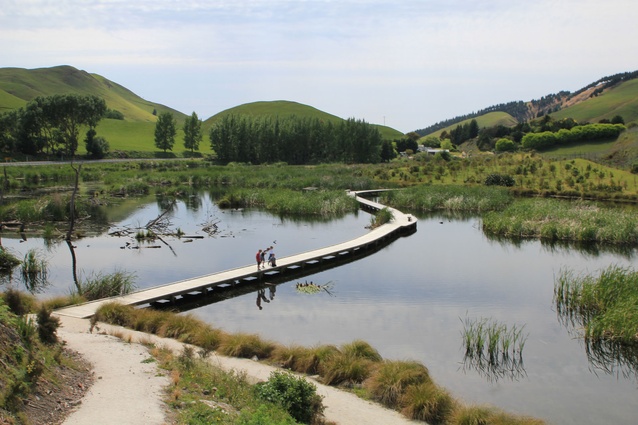
Pekapeka Wetlands, “A high quality interpretive site for wetland restoration that integrates public accessibility with educational features through use of local materials and stories.” Image: Supplied
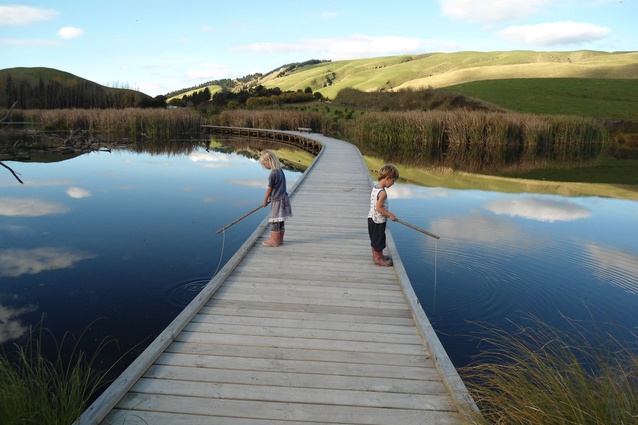
“The design of walkways and carparking within the broader planting and wetland restoration provide a range of experience opportunities for users,” said the judges. Image: Supplied
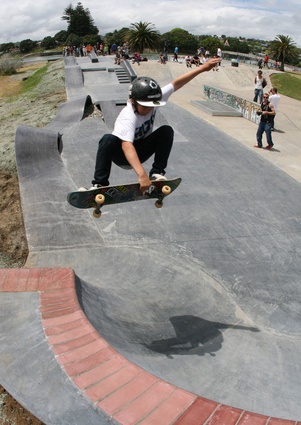
Raglan Skatepark Extension by Rich Landscapes & Premium Skatepark Designer, an NZILA Award of Distinction winner. Image: Supplied
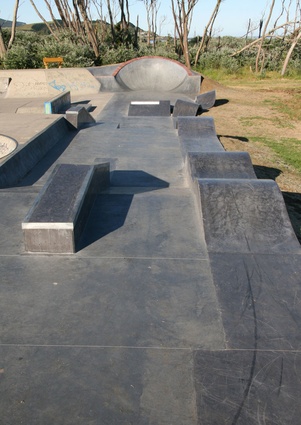
“The space accommodates a new mode of skating for surf skaters with the intricate curved wave-like patterns of the ribbon along the extension edge,” said the NZILA judges. Image: Supplied
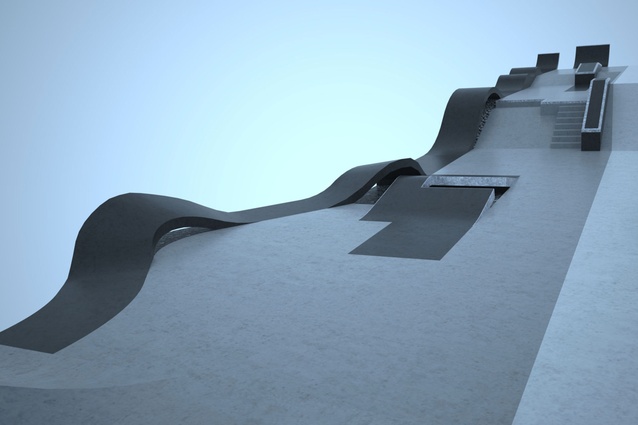
Render of the Raglan skate park addition. Image: Supplied

Taranaki Jump Platform by Wraight + Associates, an NZILA Award of Distinction winner.

Taranaki Jump Platform, a project that “illustrates well that design does not have to stifle public spontaneity and can, in fact, facilitate it”. Image: Supplied
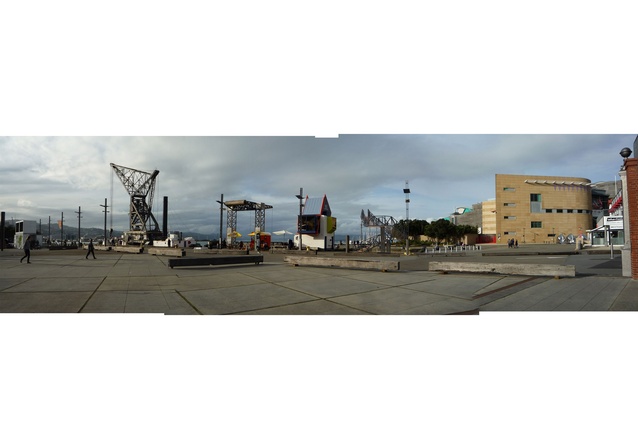
Panorama of the wider environment of the Taranaki Jump Platform. Image: Supplied
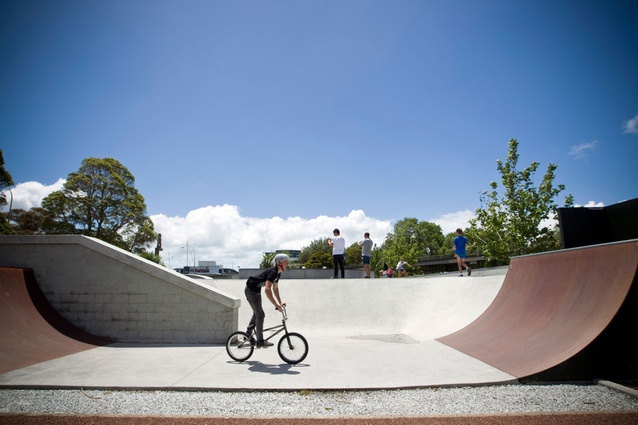
Victoria Skate Park by Isthmus, an NZILA Award of Distinction winner and a “technically competent skate facility providing equal opportunity with all levels and styles of skate/scooter/bike movement”. Image: Supplied
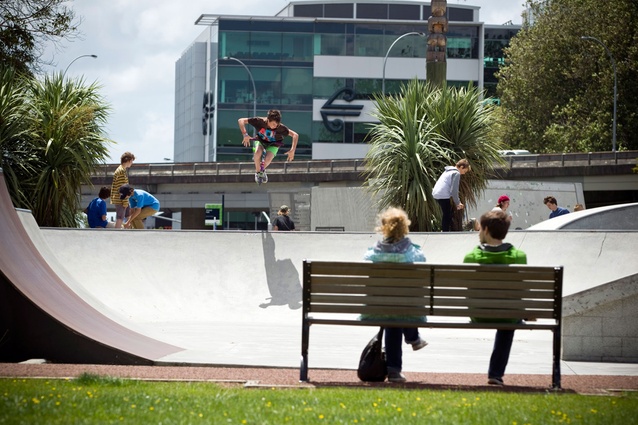
“The open feel makes the space visually accessible and integrates with the surrounding park creating a safe environment for users,” said the judges. Image: Supplied
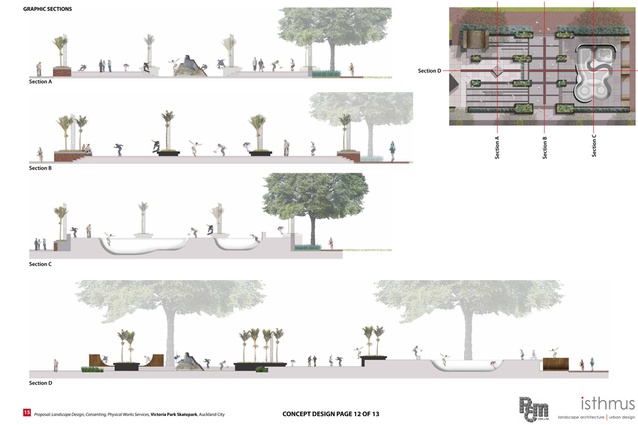
Isthmus’s design drawings of the Victoria Skate Park. Image: Isthmus
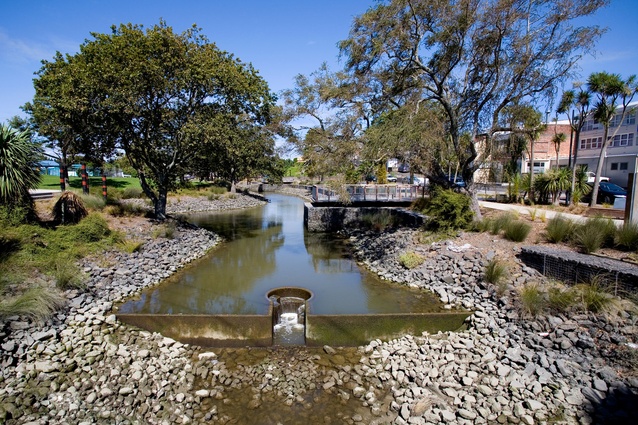
Waiuku River Lane by Reset Urban, awarded an NZILA Award of Distinction, “facilitates the potential to activate a space economically with exciting possibilities”. Image: Allen Nicholson
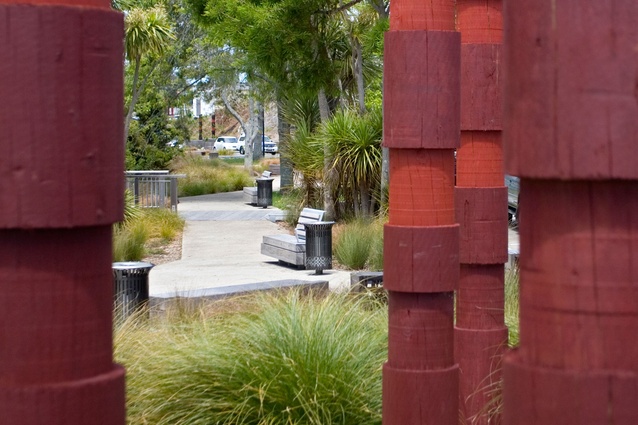
“Furniture detailing and vertical features provide interest and have a simplicity that allows for easy maintenance in a public space,” said the NZILA’s judges. Image: Allen Nicholson
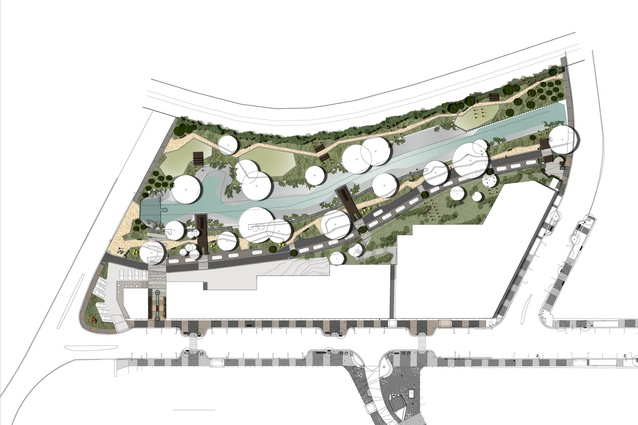
Plan of Waiuku River Lane. Image: Reset Urban

Jasmax’s work at University Plaza in Dunedin. An NZILA Award of Excellence winner in the commercial, industrial and institutional landscape architecture category. Image: Supplied
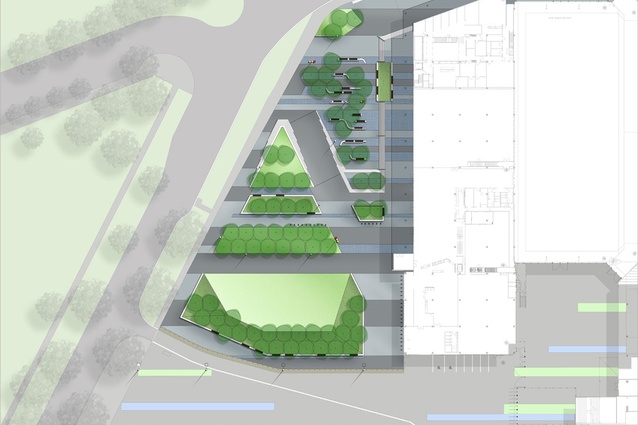
Plan of University Plaza. Classic clean lines and well defined spaces create a multiplicity of functional social areas appropriate to the intended users of University students. Image: Jasmax
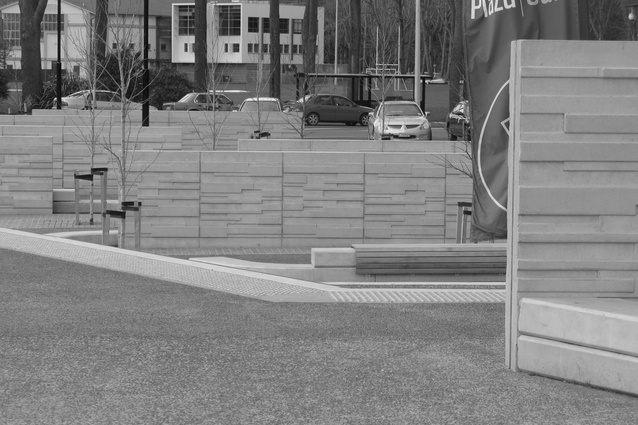
“This project has achieved variety with simplicity – a reduced palette of materials creates a cohesive solution that works well with the strong architecture,” said the judges. Image: Supplied
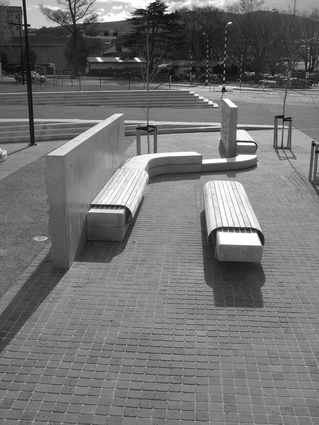
“The simplicity of the design has carried seamlessly through to design details … the design will mature into a great forecourt space with gravitas.” Image: Supplied
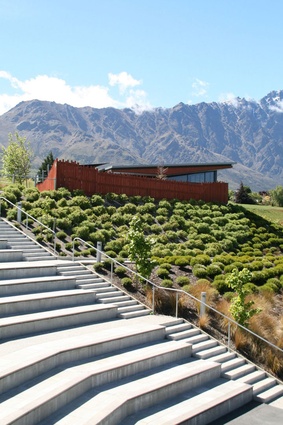
Remarkables Primary School by Baxter Design Group. This NZILA Award of Excellence winning project for institutional landscape architecture “pays homage to the landscape while adding significantly to the environment of learning”. Image: Supplied
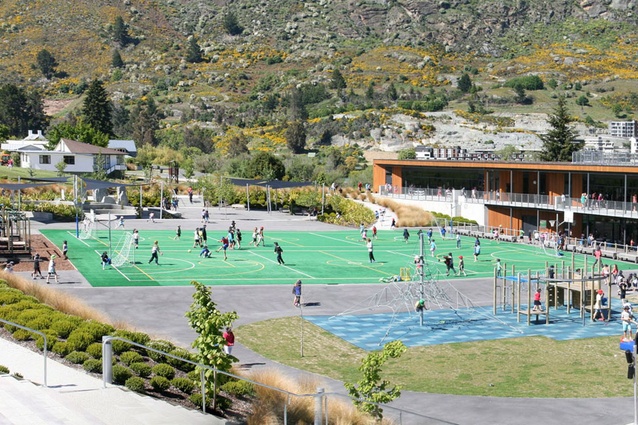
The NZILA judges said that the “space provides opportunities but does not dictate and, as such, allows for innovative and interrogative use of the space by students.” Image: Supplied
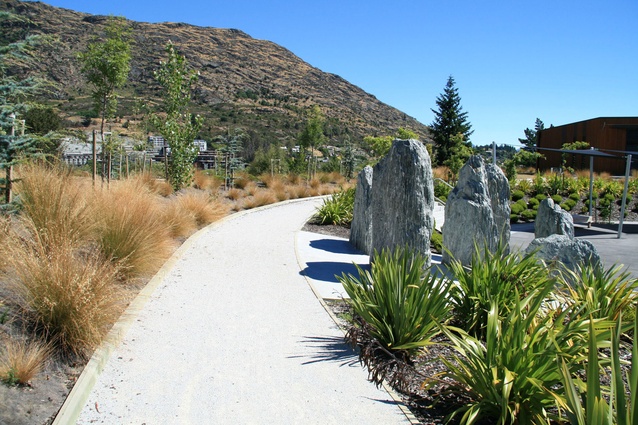
“The landscape provides a nurturing environment for life-long learning. Clever use of landform results in an enclosed, sheltered yet interesting space for children to explore.” Image: Supplied

Freeman’s Bay School Courtyard by Boffa Miskell, an Award of Distinction winner for institutional landscape architecture. “A beautifully simple and highly functional outdoor courtyard.” Image: Supplied
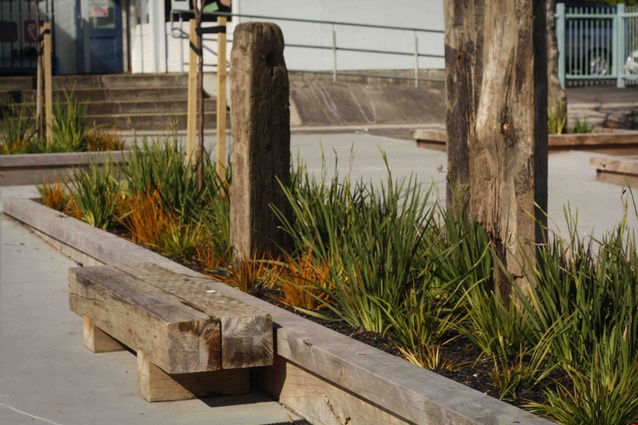
Freeman’s Bay School Courtyard detail. Image: Supplied
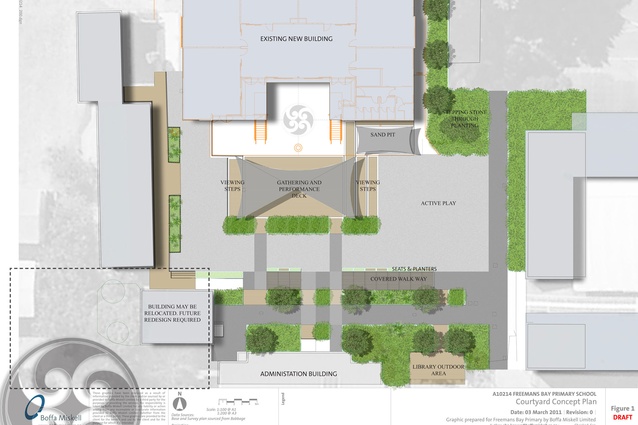
The space has connected with the heritage of the area by using old wharf piles discovered in the excavation of the nearby Victoria Park tunnel. Image: Supplied
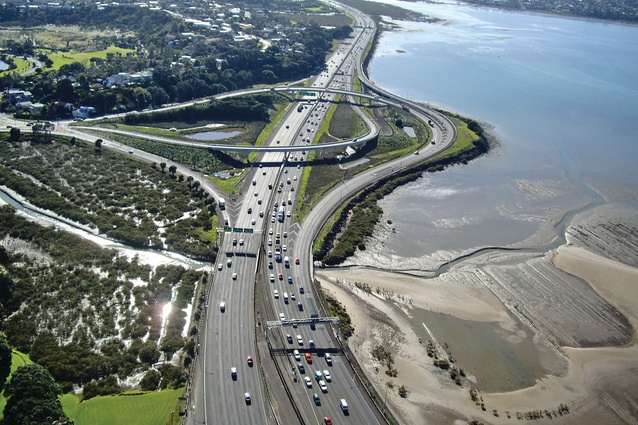
Onewa Interchange by Opus, a “highly effective and ecologically appropriate response to a demanding road interchange”, and winner of an NZILA Award of Distinction in the commercial, industrial and institutional category. Image: Supplied

“The mass planting of wetland and harbour edge species, placement of stormwater ponds and associated earth mounding to integrate the road network into the landscape has achieved a dramatic planted feature.” Image: Supplied
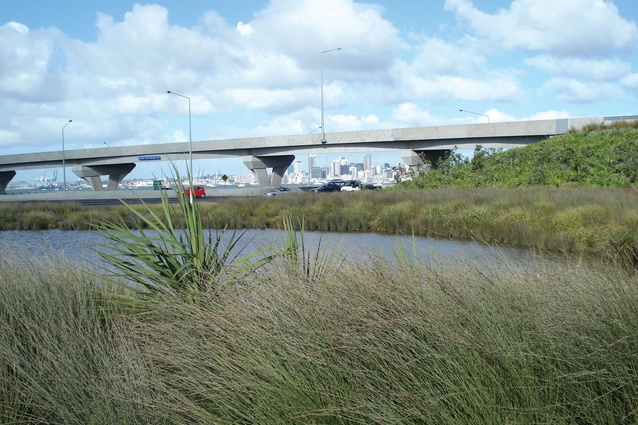
The NZILA’s judges describe the Onewa project as, “An excellent and highly successful example of an extremely high quality transport corridor landscape response.” Image: Supplied

Tranquil Garden, Rangitoto College by Jill Rice of Get Outside in association with Adams De La Mare, an NZILA Award of Distinction winner in the commercial, industrial and institutional category. Image: Supplied

“A clean and crisp design creates a deceptively large array of seating and conversation opportunities within a secondary school environment,” said the NZILA judges. Image: Supplied

The design responds to the brief to encourage personal relationships and discussion among students in a tranquil setting. Robust materials appropriate to setting and budget were chosen.
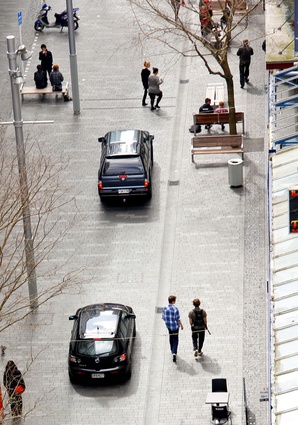
Elliott & Darby Street Area Upgrade, an NZILA Award of Excellence winning project for urban design. Image: Supplied
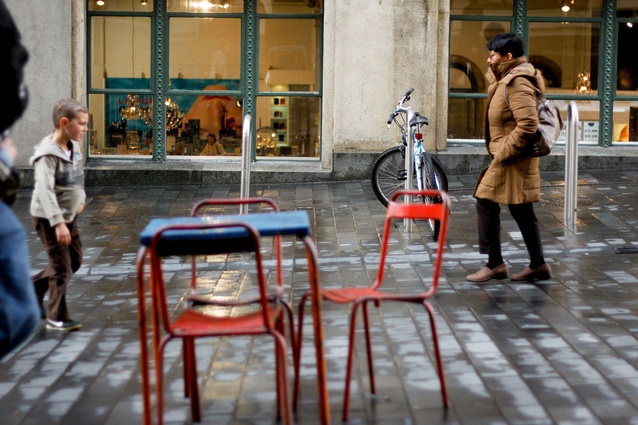
Elliot & Darby Streets are now “shared spaces” and the designers, said the judges, performed “an elegant and constrained response to the difficult task of mixing traffic and pedestrians”. Image: Supplied

The shared space is designed to ensure that “pedestrians are assured a safe and equitable realm to use in a variety of ways”. Image: Supplied

A device to aid the visually impaired was designed into the streetscape. Changes in surface texture provide alerts. Image: Supplied
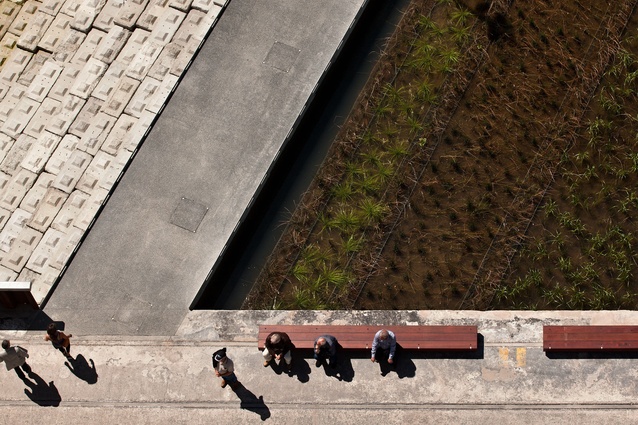
Jellicoe Street, North Wharf and Silo Park by Wraight + Associates, an NZILA Award of Excellence winner for urban design. Image: Simon Devitt

The gantry at Silo Park. Image: Simon Devitt

North Wharf. “The integration of existing industrial wharf materials and features such as barnacle encrusted concrete and rail tracks adds to the industrial aesthetic and creates a robust and tactile environment.” Image: Simon Devitt
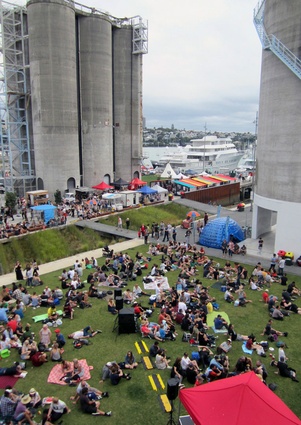
Silo Park. The NZILA judges said that this project “creates a vibrant space that connects people with the wharf environment and provides a range of distinct spaces for social gathering.” Image: Simon Devitt

A blast of colour defines the edge of the space. Image: Simon Devitt
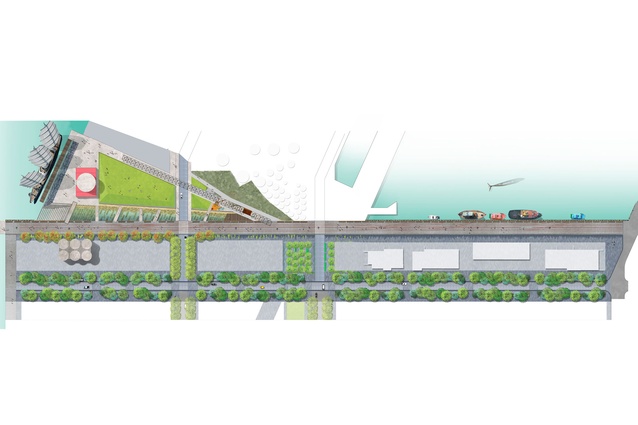
Plan of Jellicoe Street, North Wharf and Silo Park by Wraight + Associates. Image: Wraight + Associates
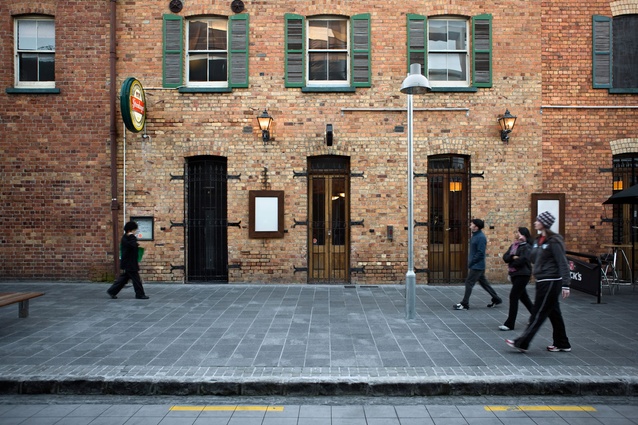
Newmarket Street Scapes by Isthmus, an NZILA Award of Excellence winner for urban design. Image: Simon Devitt
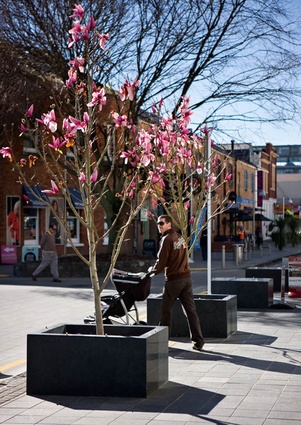
“The upgrade of Newmarket streetscape utilises a clean and sophisticated palette of materials that compliments rather than distracts from the re-vitalised retail outlets,” said the judges. Image: Simon Devitt
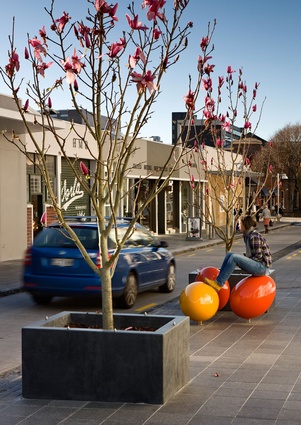
Incorporation of art work at key locations builds on the theme and provides visual interest for pedestrians and passing motorists. Image: Simon Devitt
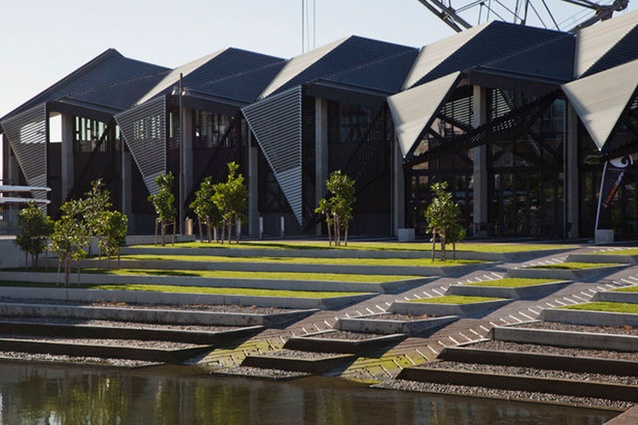
Taranaki Wharf West by Wraight + Associates, an NZILA Award of Excellence winner for urban design. Image: Supplied
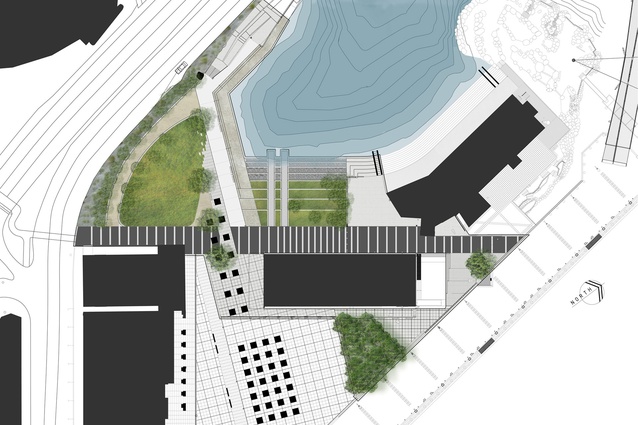
Plan of Taranaki Wharf West. Image: Wraight + Associates
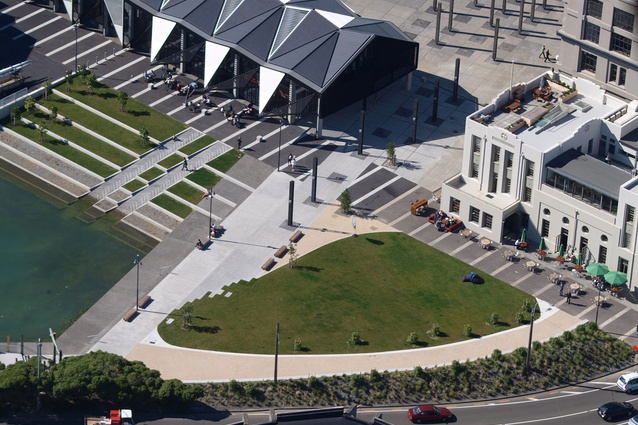
” This space has achieved an excellent link between the disparate spaces of the Wellington waterfront and provides a genteel connection with the wharf,” said the NZILA judges. Image: Supplied
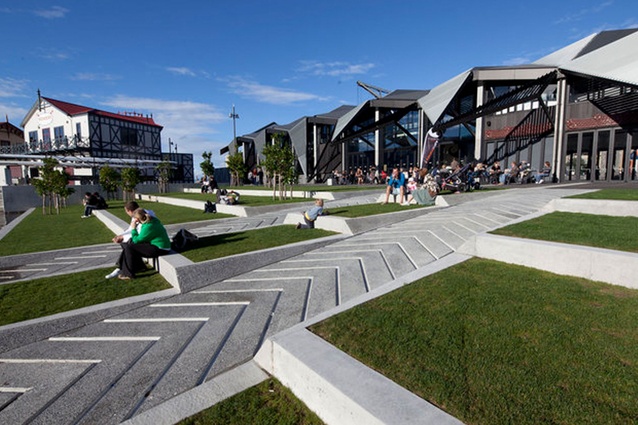
Appropriate use of symbolism and pattern in the paving and steps to reflect the adjacent built forms is the strong feature of this project. Image: Supplied

Te Puke Walkway, Heritage Courtyard and Jubilee Park Destination Playground Development received an NZILA Award of Distinction winner for urban design. Image: Supplied
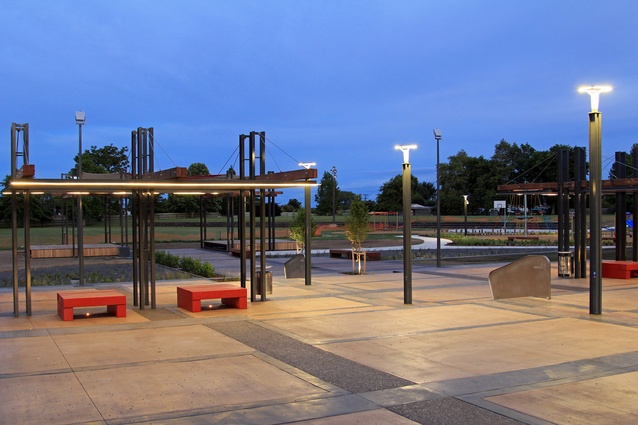
“Quality of materials and strong use of vertical elements assists in creating a destination space that draws people from the main street to a heritage open space,” said the judges. Image: Supplied
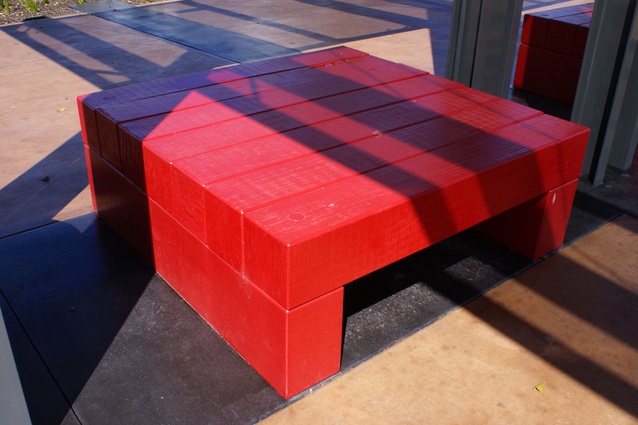
Seating detail. Image: Supplied
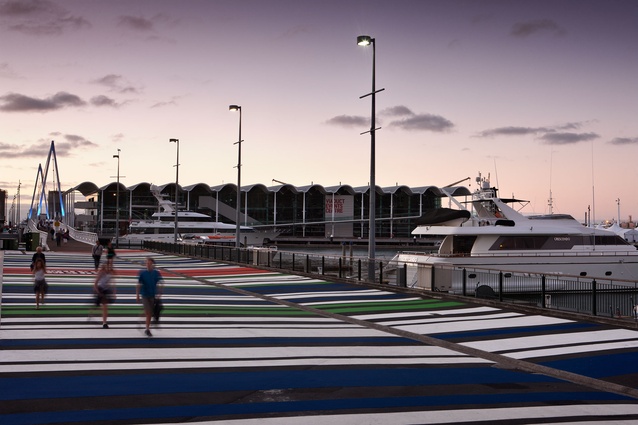
Te Wero Island and the Eastern Viaduct by Boffa Miskell, a winner of an NZILA Award of Distinction and a Resene Colour Award of Excellence. Image: Supplied
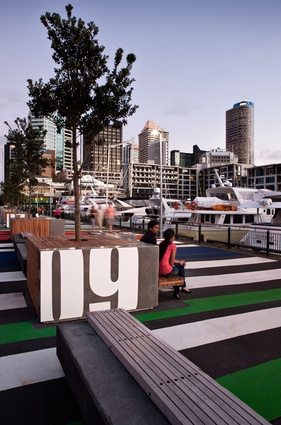
“A bold and deceptively complex resolution to addressing a temporary circulation outcome,” said the judges. Image: Supplied
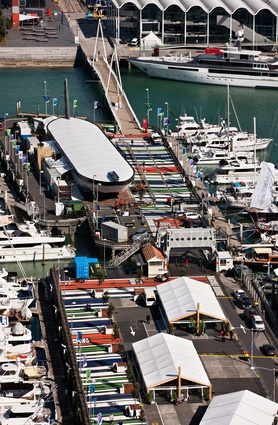
Overview of area. The design provides a cohesive connection between waterfront spaces and identifies a clear movement route through to the newly created waterfront spaces. Image: Supplied
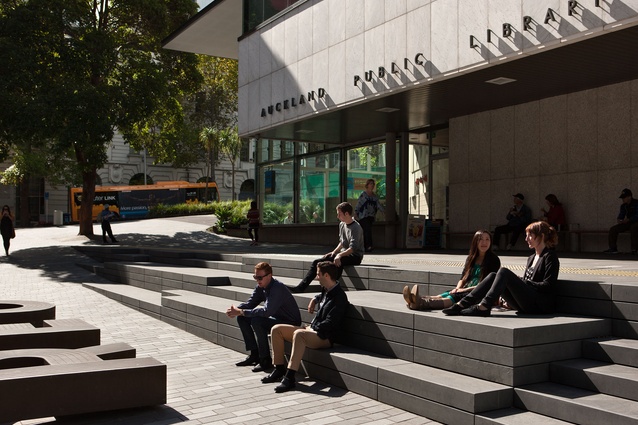
Lorne Street: Cultural Precinct by Architectus. This project won an NZILA Award of Distinctions for urban design. Image: Simon Devitt

“A successful manipulation of street edge to create not only an interesting entry to the public building but a usable kerb edge for socialisation,” said the judges of Lorne Street. Image: Simon Devitt
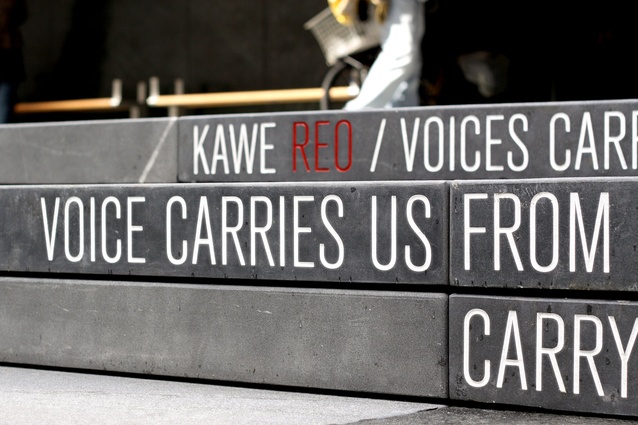
Detail of seating to fore of library. Image: Simon Devitt
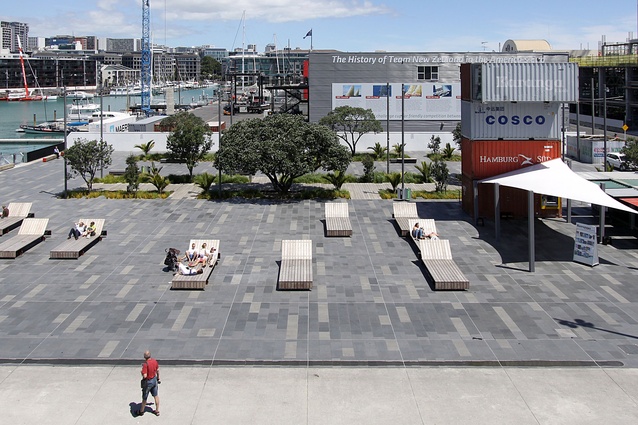
Karanga Plaza and Halsey Wharf by Architectus, and NZILA Award of Distinction winning project for urban design. Image: Patrick Reynolds
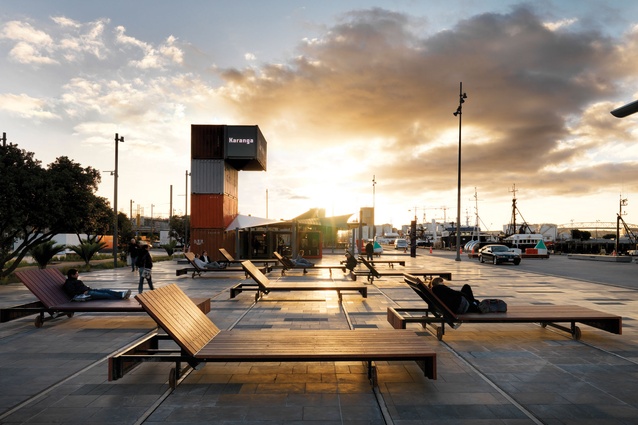
A “bold and fun solution to a linking space and for opening up access to the water of the harbour”, said the judges. “The use of over-scale seating adds a dimension and presence.” Image: Jeff Brass

Over-scaled steps drop down to provide a direct connection the water’s edge. Image: Patrick Reynolds
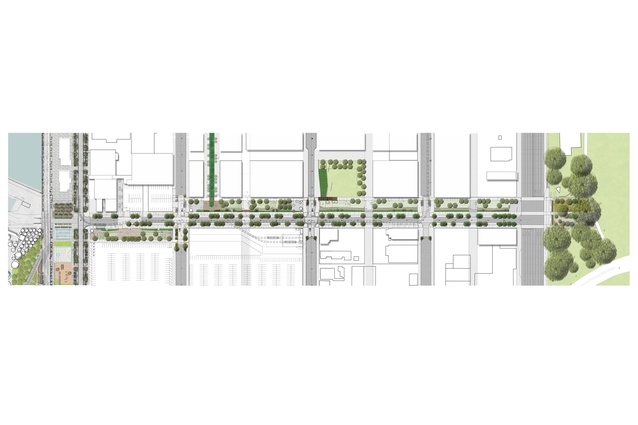
Daldy Street Linear Park by Architectus, recipient of an NZILA Award of Excellence for visionary landscape architecture and a Sustainability Award of Excellence. Image: Architectus
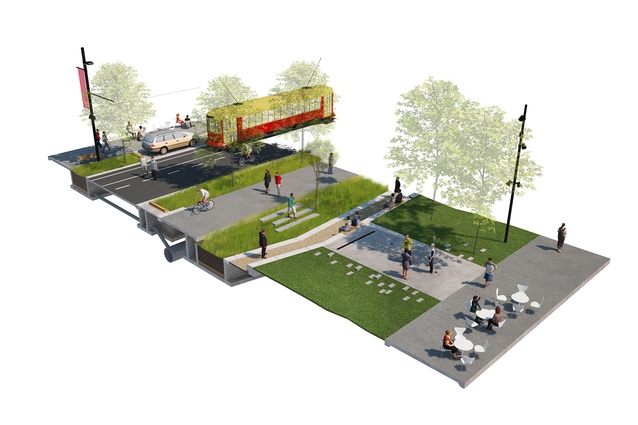
“This project illustrates the power of conceptual masterplanning and integration of water sensitive design into public open space,” said the judges. Image: Architectus
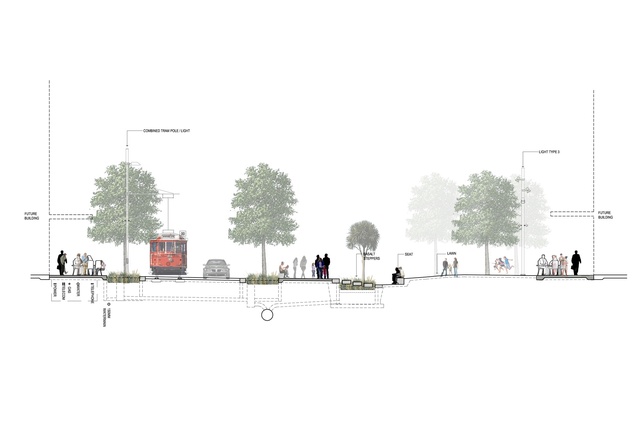
“The project blurrs boundaries between public/private/stormwater/urban design and recreation.” Image: Architectus
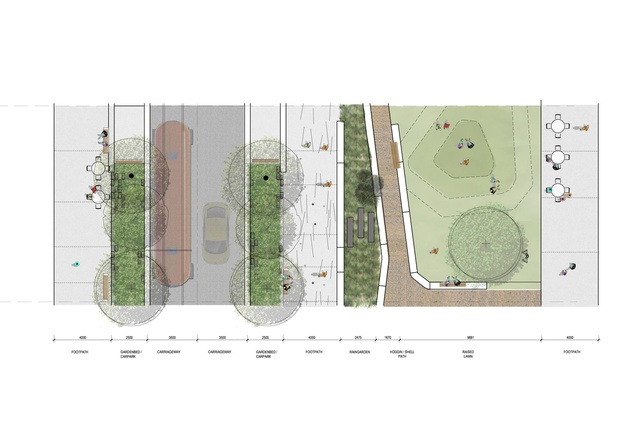
In praising the project, the NZILA judges said, “It showcases the potential of landscape architecture to be a transformative and inspiring tool in City planning.” Image: Architectus
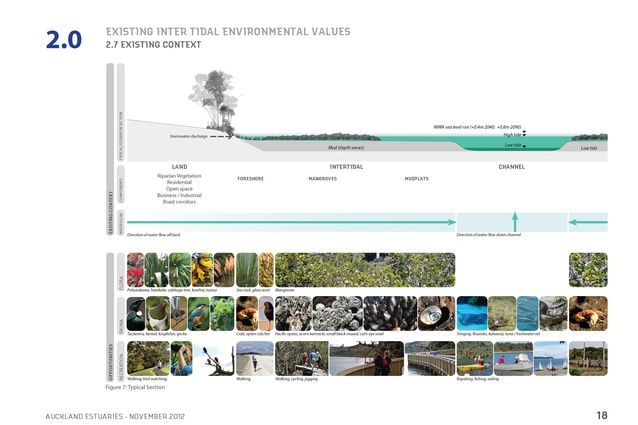
Jasmax received an NZILA Award of Excellence for visionary landscape architecture for its Urban Estuaries work. This entry also received a Sustainability Award of Excellence. Image: Jasmax
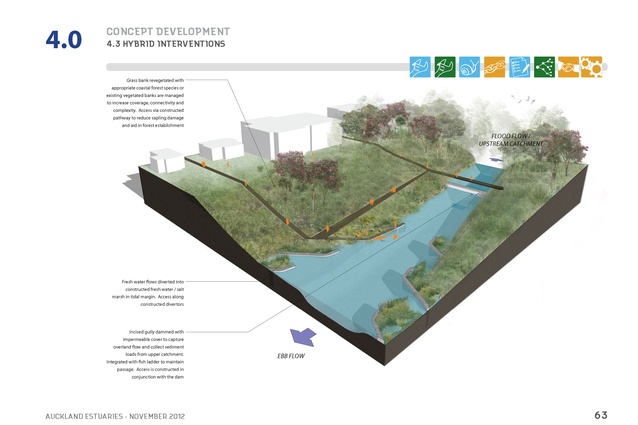
The judges said this work highlights the importance of research and design relating to sedimentation and water issues. “It explores these issues in an integrated way with integrity.”
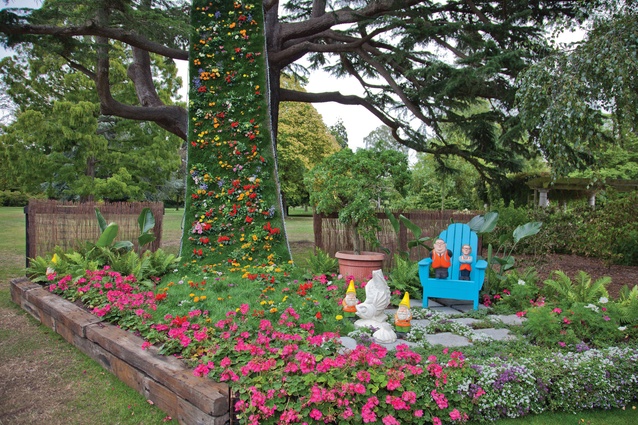
“She’ll Be Right” vertical floral wall by Pocock Design Environments, a NZILA Award of Distinction winner for visionary landscape architecture at this year’s awards. Image: Supplied
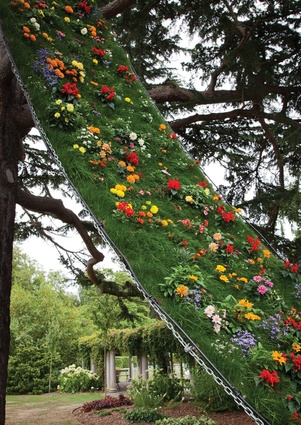
“A fun, innovative and articulate exploration of issues surrounding the recent Christchurch events and use of landscape to respond to those,” said the judges. Image: Supplied

Boffa Miskell’s Christchurch Blueprint achieved an NZILA Award of Excellence for landscape planning and environmental studies. Image: Supplied
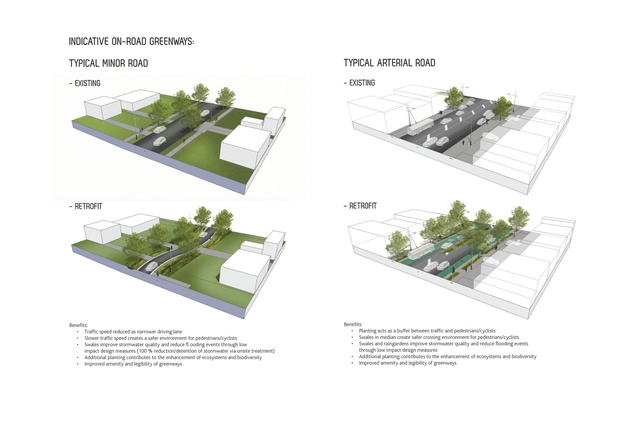
An Award of distinction was conferred to Auckland’s Greenways: A Green Vision For The City, by Dave Little, Stephen Quin, Amy Wright, Liz Clarke, Esther Hjelmstrom, Trina Jashari, Sarah Finlayson.

Kaukapakapa Design and Development Guideline by Kaipara Coast Landscape Architecture and Calyx Design received an NZILA Award of Distinction. Image: Supplied
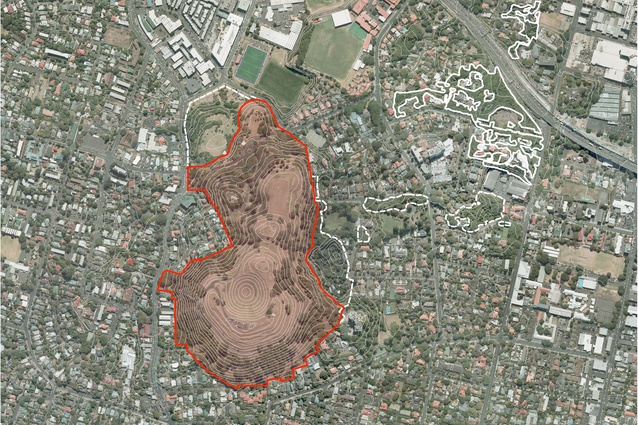
Landscape Evaluations of Geological Sites and Landforms of Auckland & the Identification of Outstanding Natural Features by Brown NZ received an Award of Distinction.
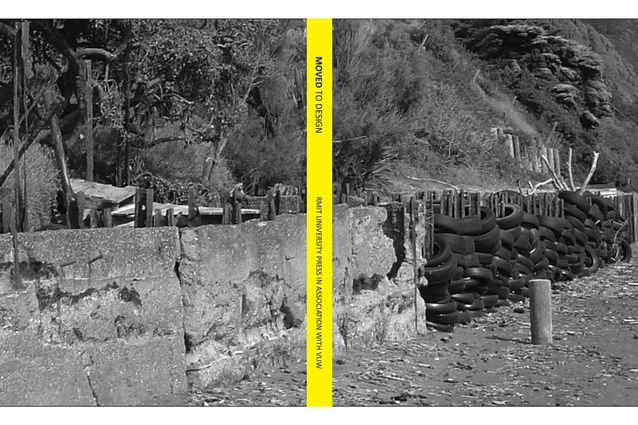
Moved to Design by Penny Allan received an NZILA Award of Excellence in the research category of the awards. Image: Supplied

A Sustainability Award of Excellence winner and an NZILA Distinction Award winner for research, the Carbon & Environment Profiling of Hard Landscape Material by Craig Pocock, Kirsten O’Connor, Mike Barthelmeh, Dr Shannon Davis. Image: Supplied

NZILA Distinction Award winner for communication & promotion, the Banks Peninsula Rural Landscape Development Guidelines by the Christchurch City Council, Strategy and Planning Group Image: Supplied
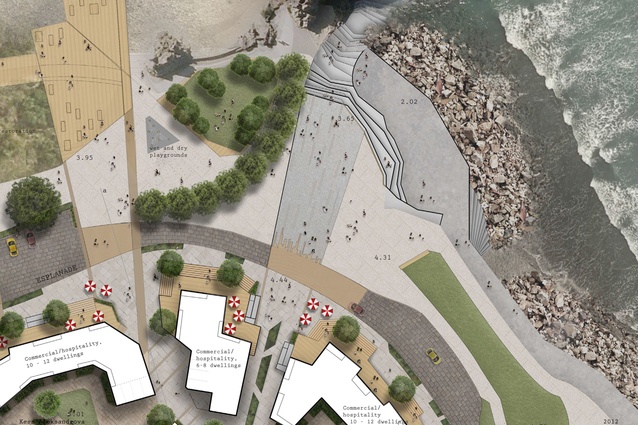
An illustration from Kess Aleksandrova’s winning Sumner-referencing project, which received an NZILA Award of Excellence in the student category. Image: Kess Aleksandrova

An image from Birdscaping the Horowhenua, by James Fischer, an Award of Distinction winning project in the student category. Image: James Fischer
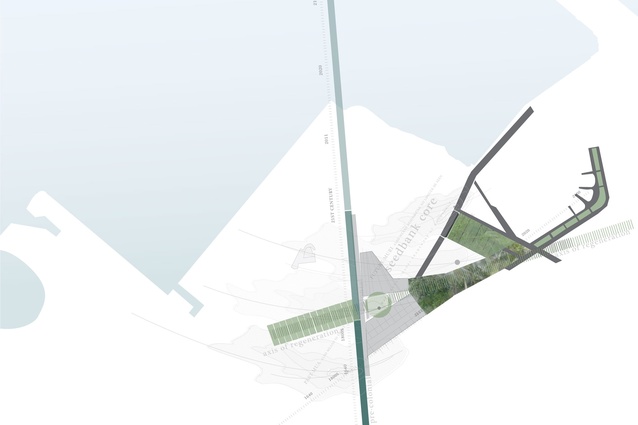
An excerpt from The Ecological Touchstones of Our Identity, by Jaime Macfarlane, an NZILA Award of Distinction winner in the student category. Image: Jaime Macfarlane

Revealing the Cryptic, by Anna Bish, an Award of Distinction winner in the student category. Image: Anna Bish
Judges from the NZILA Resene Pride of Place Landscape Architecture Awards 2013 reflect on this year's entries alongside a gallery of projects distinguished with either an Award of Excellence or Distinction.
This year’s design finalists showcased the best of landscape architecture from around New Zealand. A record 77 projects were entered into the design categories (up 33 per cent on our previous awards) and all were considered by the judges to be high quality landscape architecture work – a testament to the strength of our profession despite the difficult recession environment in which we are all working. In the planning categories, there were many examples of high calibre, international quality work. Many submissions tackled environmental resilience through understanding and implementation of landscape design and systems. Earthquake Cities on the Pacific Rim was a worthy winner of the Charlie Challenger Supreme Award.
Those awarded with either an Excellence or Distinction demonstrated outstanding or excellent approaches and responses. A strong theme was that of restraint – what was deliberately left out of the design was a catalyst to achievement of an aesthetically appropriate outcome that resonated with a strong sense of place. Deep consideration of the way space is used by the public and/or clients also stood out – spaces that drew us in and encouraged us to pause and stay showcased the success of acuity to the blurred boundary between culture and environment.
It was encouraging to see a range of projects in the visionary category that placed the landscape architect in the role of research innovator, with work that generated stunning ideas to facilitate change and re-generation, providing a service to the broader public as well as our industry.
The George Malcolm Supreme Award for design was appropriately presented to a rural project that illustrated all of the above alongside the powerful potential of landscape architecture to be a positive transformative process. Nick’s Head Station gives pause for thought when considering the highly publicised and controversial issue of foreign land ownership in New Zealand. In relation to landscape this fraught issue would be more appropriately viewed from the outcomes achieved in terms of resilience, custodianship and the legacy of sensitive stewardship rather than who has temporary ownership. This work shows that landscape responses can provide for local connections and employment, viable rural land use, conservation and restoration of native eco-systems and all this while achieving a powerful and beautiful aesthetic appropriate to place and time. Alongside the collective award winners, these projects exemplify the invaluable wisdom that our profession contributes to positive outcomes in this world of constant change.
Landscape Design Judges: Renée Davies (lead judge), Niall Simpson, Jan Woodhouse, Gordon Moller, Diane Menzies, Jacky Bowring.
Landscape Planning Judges: Sally Peake (lead judge), Mary Buckland, Hugh Lusk.
Student judging notes:
There were approximately half the number of entries in the Lincoln University Student Division of the NZILA Resene Pride of Place Landscape Architecture Awards when compared to the previous two rounds. Possibly this was due to the IFLA 50 World Congress Student Charrette occurring at the same time, with students focussing their energies on this competition.
On a positive note, all winning entries showed a passion for landscape that came through in their design work and presentations. The winning entries had consistently strong and imaginative ideas, which were well thought through and presented. Overall, however, it was felt that there was a lack of innovation, with many entries not addressing current important landscape issues (climate change, sea level rise, etc). Many entries offered only part of a solution; a number of entries appeared to concentrate on the presentation aesthetic, rather than developing a clear, strong, design-based solution. In addition, many students had strong ideas, however the bigger landscape issues, which provided context to their proposals, were often not addressed. Some proposals represented only a small part of the design process and therefore were not complete projects. The language used by student entries in support of their designs was often overly verbose. In general, students would have benefited from keeping their language simple and clear when describing their design intent and how it was achieved. In addition, many students were let down by simple grammatical errors.
Finally, the judges are not as young as they used to be, and eyesight is challenged when reading a lot of tiny text, which would have been small on an A1 plan, let alone reduced to an A3-sized page. While this may seem a rather small issue, it illustrates that any presentation should be tailored to its page size. Having said all of this, we were impressed with our winning entries which portray well considered and creative landscape architectural design work. Well done to all the successful entrants
Student Judges: Peter Kensington (lead judge), David Irwin, Mandy McMullin.









